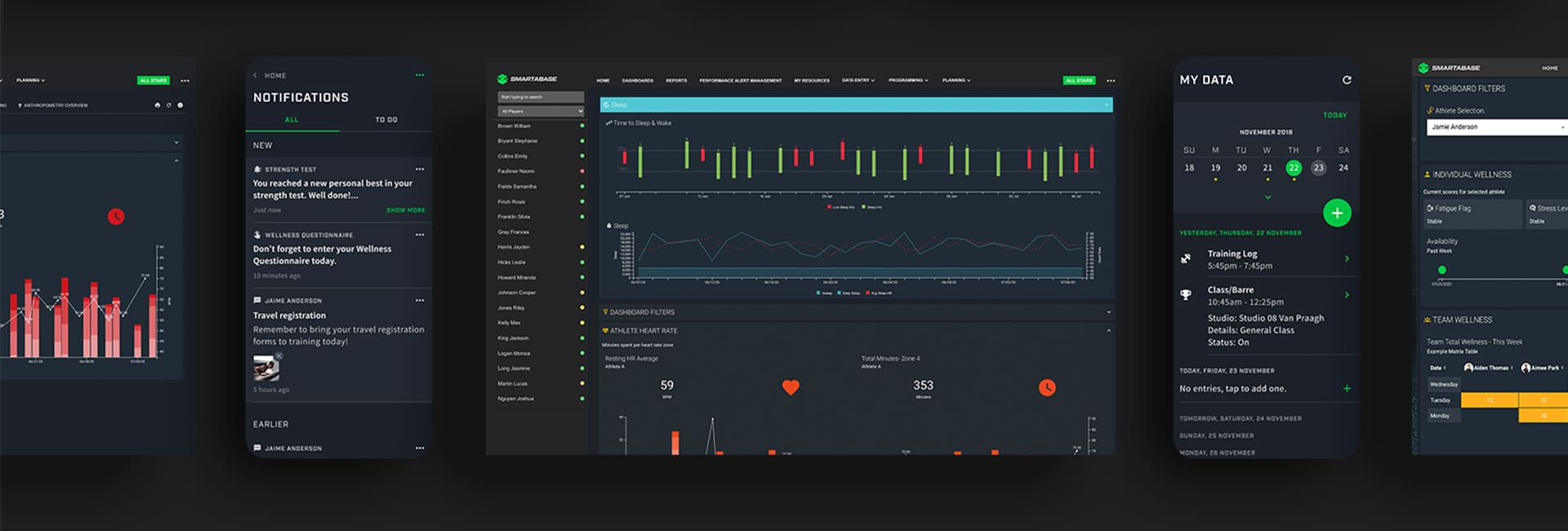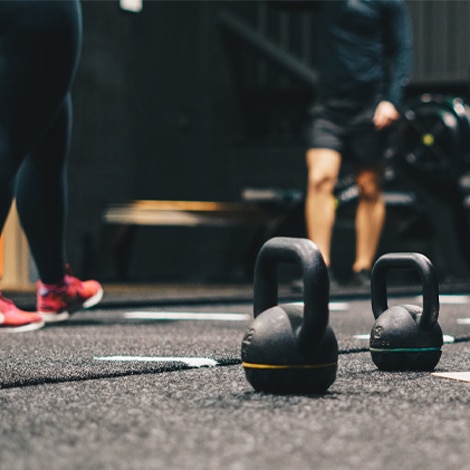By Kiran Menon and Marcus Colby
Human performance software, or an Athlete Management System (AMS), enables teams to collect, aggregate, centralize, and present data that makes performance and health-related decision-making timelier and more informed. Yet many organizations wish to go one step further and perform more advanced analysis on the information they collect.
In this article, we’ll recommend several ways to integrate your human performance platform (HP platform) with third-party applications the right way, so sports scientists avoid the common pitfalls of combining such systems and make the most of the potential that advanced data analysis has to offer.
HARNESSING THE POWER OF PREDICTIVE MODELING, AI, AND DATA VISUALIZATION
While a human performance solution like Smartabase can help teams make a quantum leap in how they gather player and team data, some performance specialists are eager to gain greater insights. This is where a third-party statistical system like R comes into play. Such a tool came out of the statistical sector and has in recent years evolved to the point that it can produce sophisticated reports and statistical analyses.
Statistical computing software like R can also enable sports scientists to utilize machine learning and artificial intelligence (AI). Typically, reports and regressive analyses have been created as one-offs that are reactive rather than proactive and use standardized templates. In contrast, AI-based tools can keep an active eye on live data and, when they spot a trend, generate real-time reports on the fly.
Another use case for integrating your human performance software with an external statistical analysis platform is increasing the process speed of high frequency data. On its own, the HP software can handle a decent amount of throughput, but some bigger organizations with a high number of athletes or warfighters or those that handle particularly dense and large data sets need to be able to process the information faster.
For example, if an Army unit is collecting 100 Hz data that shows the exposure of its bomb technicians to concussive blasts during training exercises, they might need to know which body areas are receiving the blunt of such waves while the exercise is still in progress. This is another advantage an analytics engine can provide, parsing this information from accelerometers at lightning speed. It could provide a similar benefit if used to process raw GPS data from football, soccer, or rugby players during team training or a pre-season camp.
This can be processed in R and then, if needed, further visualized in Power BI or Tableau. These two BI platforms can run R code within their structures as well. When combined in both sports and military settings, integrating your human performance software and statistical system can help sports scientists delve deeper into athlete data to gain a new level of insight.
Another benefit of statistical analysis systems is that they’re designed to offer more robust data visualization. A human performance platform can produce dashboards and other useful graphical displays that provide at-a-glance insights into athlete information, but some human performance professionals want a greater level of sophistication and customization.
This is made possible by exporting data from your HP platform into the third-party application, which can in turn connect to a business intelligence system like Tableau or Power BI, in which the options for visualization are almost unlimited. From there, it’s a matter of figuring out which visual representation will be most beneficial for the sports scientists and coaching staff/leadership so they can make the data actionable.
DEFINING GOALS AND PATIENTLY TESTING HYPOTHESES
It’s very important that there are clear aims in mind when integrating your HP platform with statistical tools. Sports scientists and coaches/leadership often pursue a “fishing” approach, whereby they simply hope to find something meaningful in the reports a third-party system provides.
This is much less effective than identifying a single hypothesis and running a report or creating a model to test it. Doing so can provide greater clarity and specificity that can in turn drive more purposeful interventions that improve athlete/servicemembers performance, recovery, and wellbeing. Begin with the goal and then reverse engineer the process to find a data model to fit it, rather than getting carried away with advanced templates that look good on the screen but yield little in the way of usable insights.
The latter is an example of trying to do too much too soon. Advanced analytics has a lot of potential, but like anything else in sports science, progress is made slowly and incrementally. As such, it’s essential that a team tries to walk before they can run when first dipping their toes into advanced analytics. All too often, a team leader will come to believe that there will be a Moneyball effect – in other words, that such analysis will solve every problem and deliver a championship. In reality, it’s more realistic to target small, incremental improvements and to use data analysis to ask better questions that sometimes lead to meaningful answers.
Consistency is also key when trying to wield the combined power of human performance software such as Smartabase and an advanced analytics utility. If a sports scientist uses data modeling to assess the validity of a certain hypothesis and their conjecture turns out to be wrong, it’s a waste of time and effort to simply abandon this line of inquiry. Instead, they should consult with their colleagues and come up with a modified hypothesis and test it again, repeating the process until they reach a meaningful conclusion. It’s only then that the scientific method can be brought to bear on improving sports performance.
Unfortunately, it’s more common for someone to come up empty on their first attempt and move onto something else. This is like the “spray and pray” approach that venture capitalists sometimes take when investing in startups. It can work occasionally, but more often than not, it’s less successful than a targeted, measured, and patient approach. The same goes for advanced sports analytics. It’s better to spend more time on a couple of initiatives than to go on a wild goose chase with every interesting metric that might lead to nowhere.
DIALING IN DATA SETS AND HUMAN RESOURCES
One of the common mistakes when trying to export information out of a human performance platform and into a third-party analytics tool is that data sets can be incomplete. This is often because the team has a siloed approach that makes the scope or focus too narrow. If this is the case, it’s going to be hard to glean anything meaningful from the data.
Another error that’s all too common is failing to account for the margin of error that’s inherent in all wearables and other data collection devices. This can skew data models and make predictive analysis largely meaningless, particularly if a plus/minus margin of error for each device is multiplied across several inputs.
The success of combining your human performance platform/AMS and an advanced analytics program doesn’t merely depend on the capabilities of the two systems and their compatibility, but also on the human factor. In working with pro and college sports teams and military units, we’ve seen time and time again that the person or team that’s asked to integrate the human performance software with an external application for advanced data analysis often lacks the expertise to do so.
It’s important to both defer to in-house experts and find a human performance software vendor like Fusion Sport that has experienced data scientists to help guide the process. This will reduce the learning curve and make it more likely to obtain the desired outcomes than if someone is stumbling in the dark and trying to learn on the fly. Bringing in experienced resources will shorten the time it takes to see a return on investment and will also expedite the process of obtaining meaningful and actionable information from athlete data.








